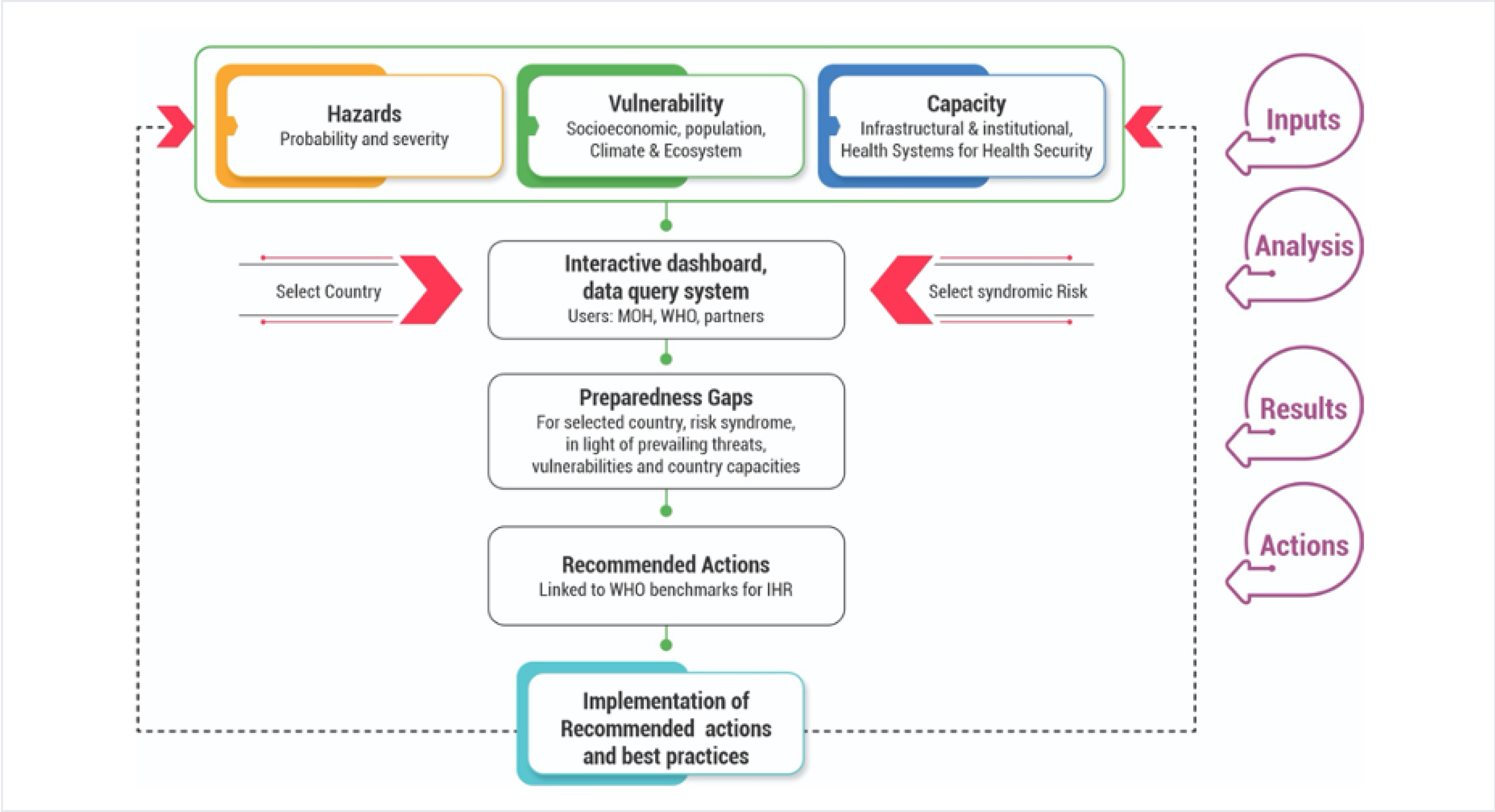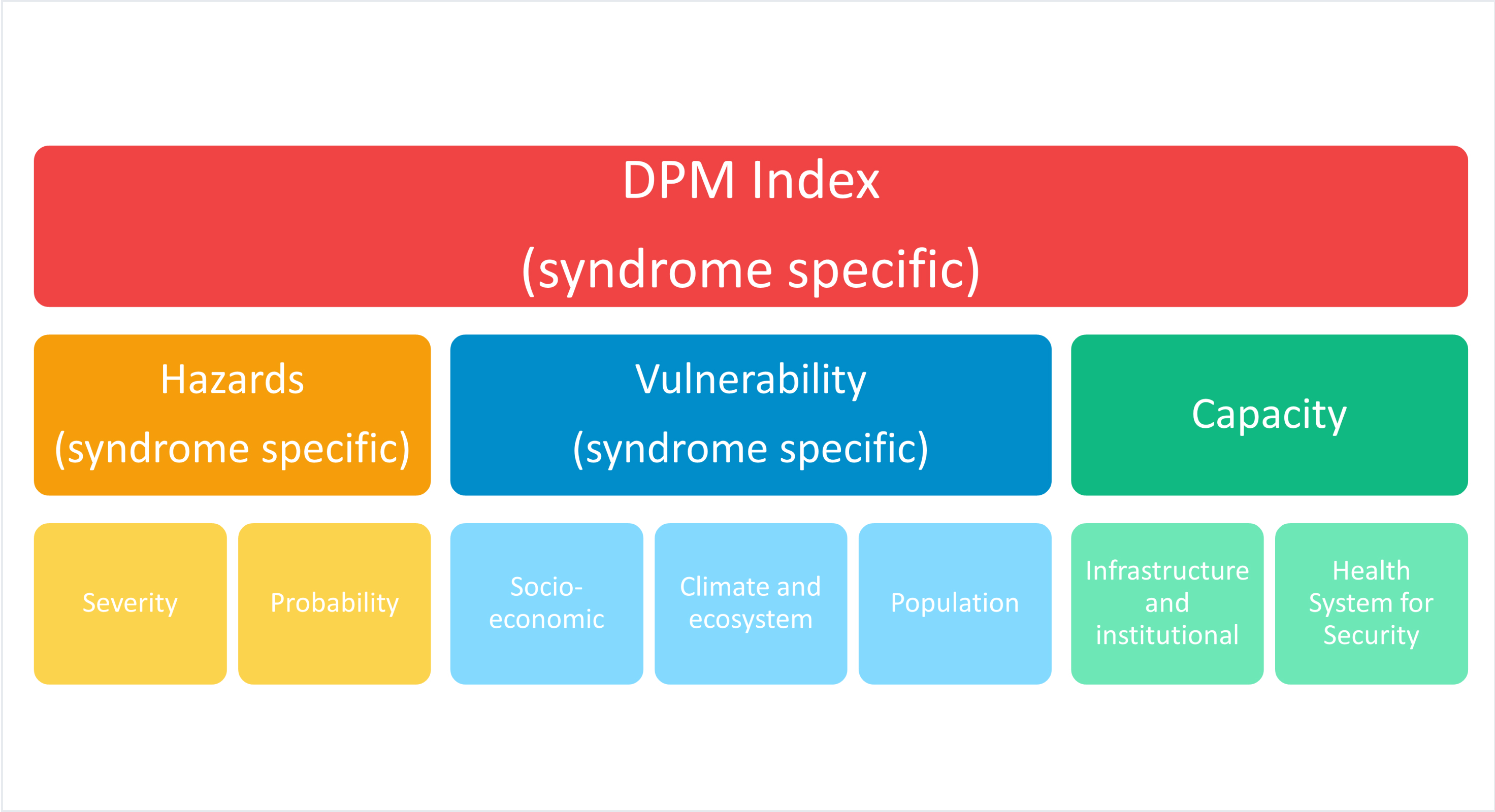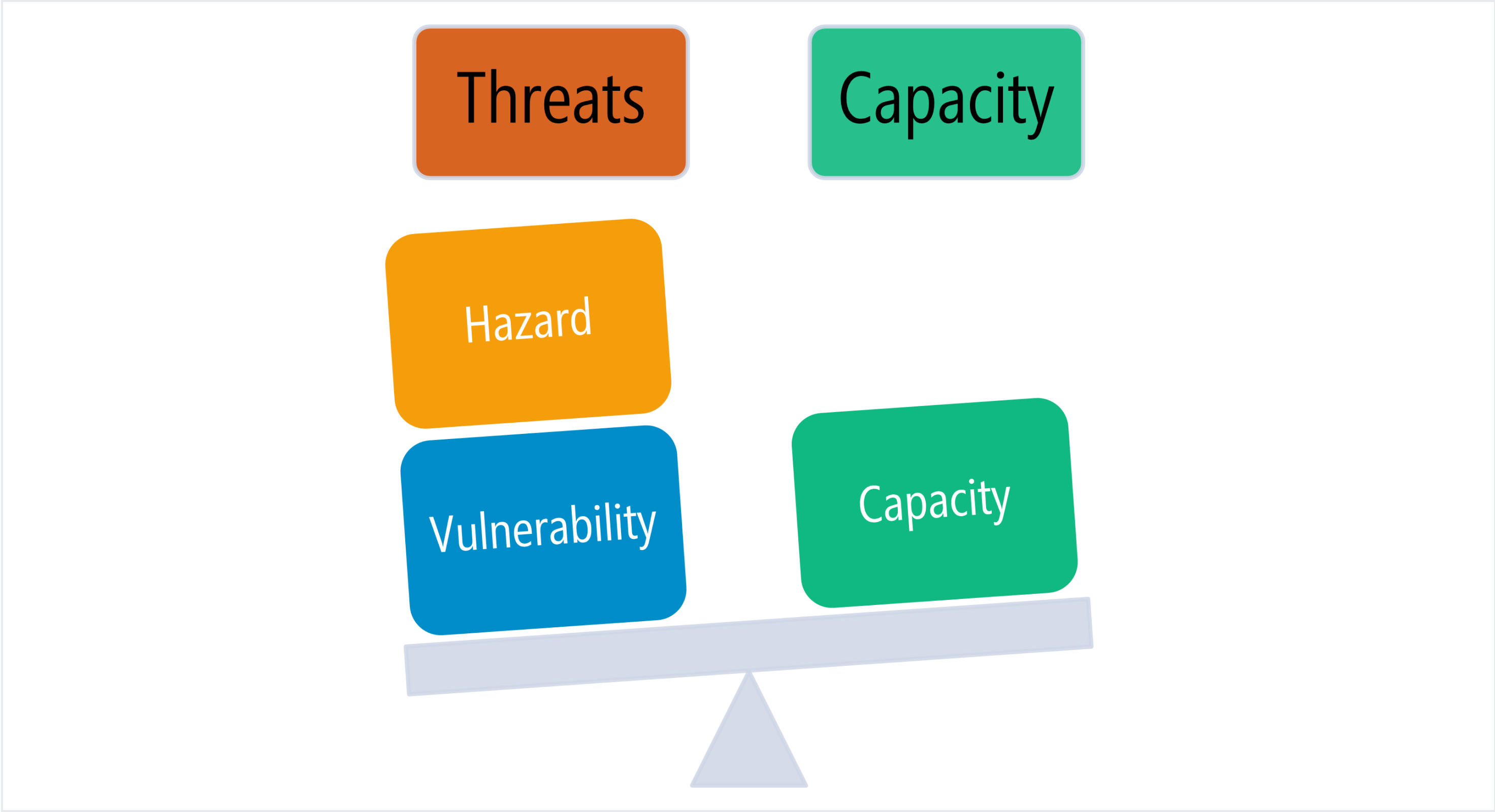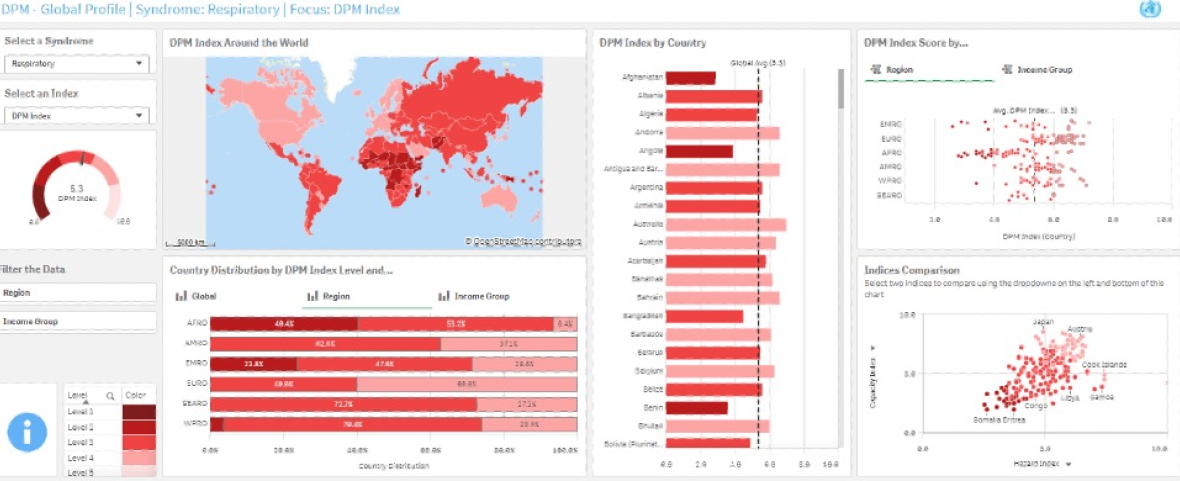
Why Dynamic Preparedness Metric (DPM)?
Multiple indices currently exist to measure a country’s health emergency preparedness status. However, these existing metrics are based on cross-sectional assessments that do not reflect current and changing risks and are not linked to implementable actions, as highlighted by the COVID-19 pandemic.
The DPM provides more dynamic, evidence-based, risk-based preparedness information to inform countries of their preparedness status and identify capacity gaps. This supports the prioritization and implementation of key actions for improving capacities.
The DPM is additionally dynamic in its determination of a country’s preparedness status and gaps through separate calculations for 5 different acute syndromes based on the Annex 2 of the IHR:
- acute respiratory syndromes
- acute diarrheal syndromes
- acute hemorrhagic syndromes
- acute neurological syndromes
- acute febrile illness.

How it Works?
Two metrics have been developed to assess the country preparedness status:
- the risk-based DPM index, which supports countries in understanding current and changing capacities in line with hazards and vulnerabilities to strengthen their preparedness capacities for managing health emergencies effectively; and
- the preparedness capacity gap, which helps countries identify gaps and prioritize actions necessary to address those gaps.
The DPM calculates preparedness status and capacity gaps by:
- Connecting to the Health Security Preparedness System to fetch country specific hazards, vulnerabilities and capacities indicators.
- A user logs on to the DPM dashboard to select a syndrome and a country.
- The DPM then calculates the scores for the particular country and selected syndrome. The weighting scheme can be adapted by the user to better capture the risk profile for the selected country and syndrome.
- Based on the DPM scores, the dashboard provides a list of priority recommended actions which can be implemented to improve the preparedness score for the selected syndrome and country. The priority actions are linked to the WHO Benchmarks for IHR.
- As data is updated quarterly, the DPM will reflect implemented actions in future calculations.
After actions are implemented, the whole cycle can start again for that syndrome or another one. The DPM is intended to be useful for IHR national focal points, the WHO Health Emergencies Programme at country, regional and headquarter offices as well as partners supporting IHR implementation and preparedness activities.

DPM Index
The DPM provides a composite measure of risk related to epidemics as well as the identification of gaps in preparedness capacity. It is necessary to know the level of risk, and the impact of specific preparedness plans on such risk, to assess and appropriately improve the level of preparedness in each country.
Hazard: A hazard represents the load that the country will handle based on intensity and frequency of the exposure. It refers only to infectious disease outbreaks, while natural hazards such as earthquakes or floods, which can increase exposure to infectious hazards, are included in the vulnerability dimension. The hazard dimension captures the severity (impact intensity) and probability (chance of occurring) of infectious disease outbreaks.
Vulnerability: Vulnerability describes the underlying susceptibility of a population and how severely impacted exposed people can be. Thus, the vulnerability dimension captures socio-economic, population, climate and ecosystem vulnerability.
Capacity: Refers to all capacities required for effective preparedness. The preparedness capacity dimension captures infrastructural and institutional capacities which are non-health sector interdependencies of preparedness as well as health systems for health security.

How to use
The DPM index is scored between 1 and 10. The low values of the index represent a negative performance (high vulnerability, low capacity), and the high values of the index represent a positive performance (low vulnerability, high capacity). The notion that lower scores indicate poorer performance is consistently applied also at dimension, functional and element level. All the DPM indicators are classified on a 1-5 scale.

Preparedness capacity gap
How does the DPM link with recommended actions to improve preparedness capacity? Through the preparedness capacity gap.
To identify potential preparedness capacity gaps, the DPM views the risk dimensions as an interaction between two opposing forces: on one side the hazards and vulnerabilities (threats), counterbalanced on the other side by capacity.
Conceptually, the level of capacity should be high enough to compensate for the load of threats faced by a country. If the capacity level is lower than the combined hazards and vulnerabilities, there will be a resulting preparedness gap.

Indicators
The theoretical framework of the DPM provides the basis for element and indicator selection, which is an essential step for developing a composite measure. Various indices, indicators and proxy indicators were proposed and discussed by a technical working group for the DPM. Indicators are grouped into the three risk dimensions of hazard, vulnerability or capacity.
Furthermore, power and validity of the composite measure depends on the core indicators that are selected and how accurately they measure the variable and the datasets describing each chosen component. Therefore, the indicators should be:
- reliable, open source and publicly available
- consistently and continuously updated
- wide coverage, scalable down to region/subregional level and temporally dynamic
Details of input variables are available in:


